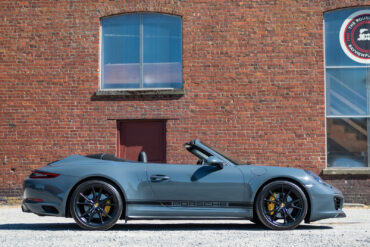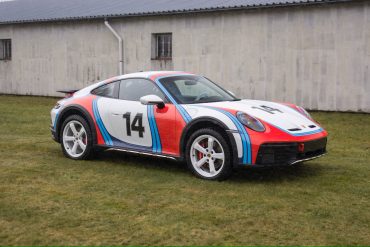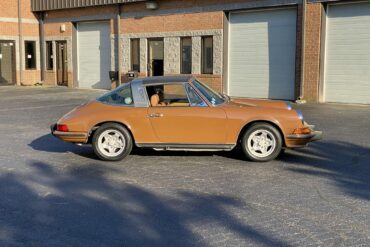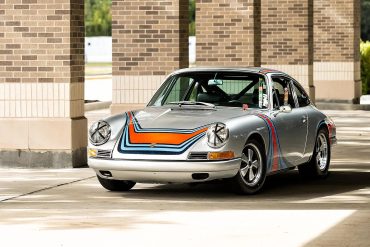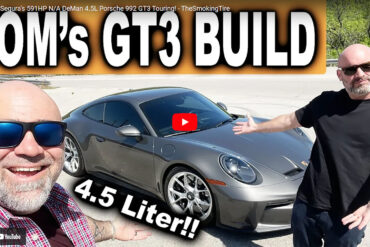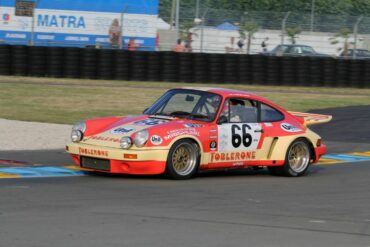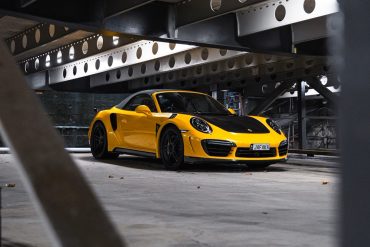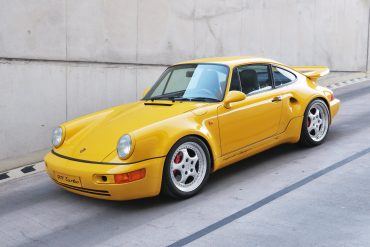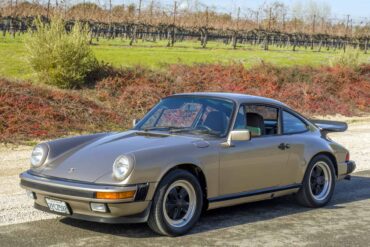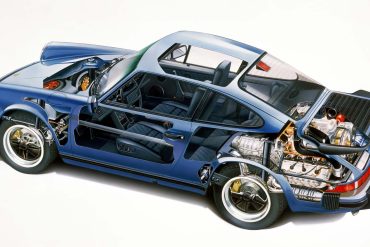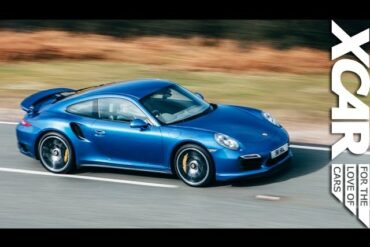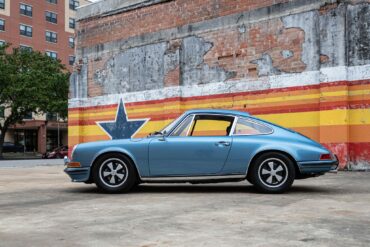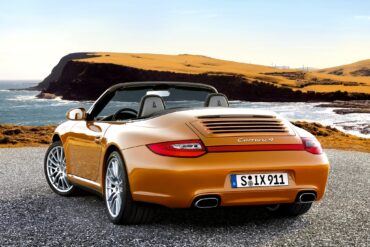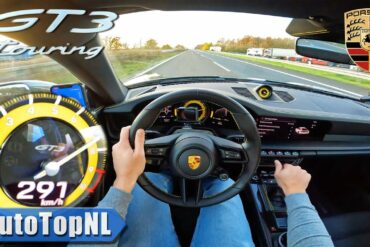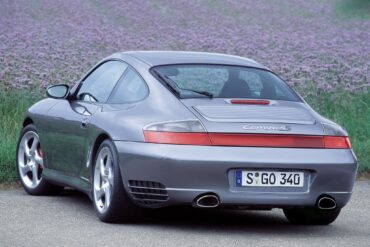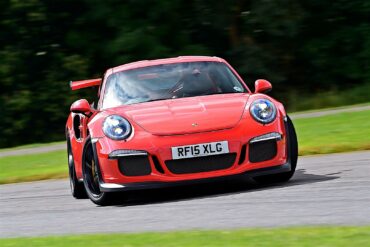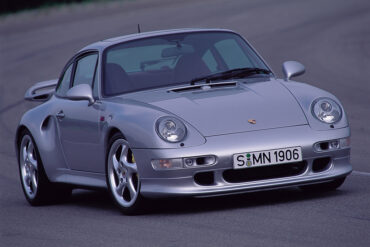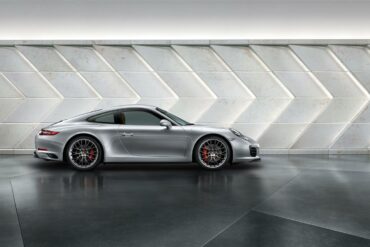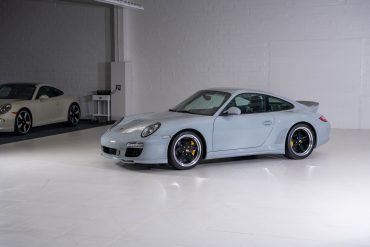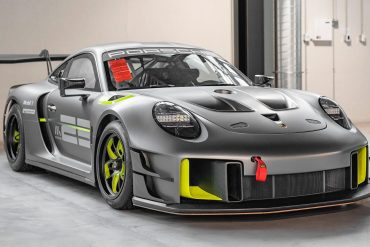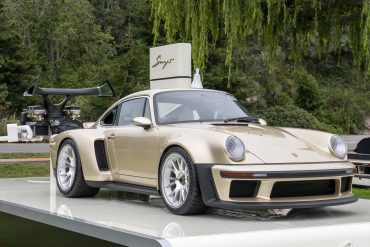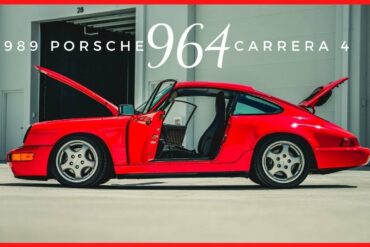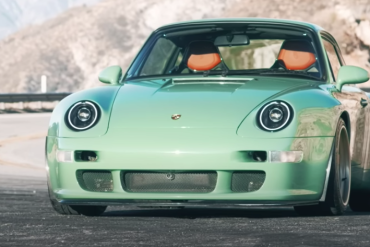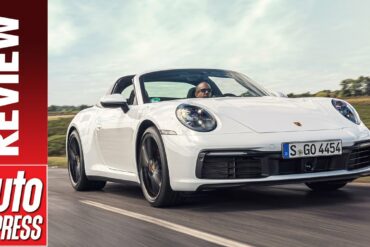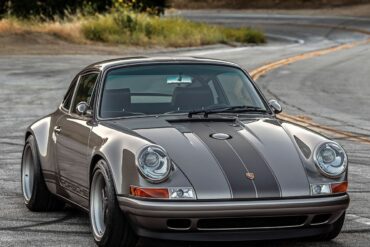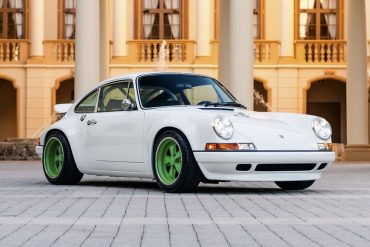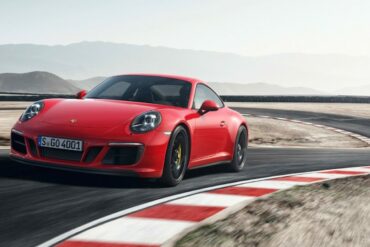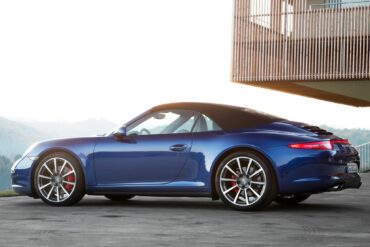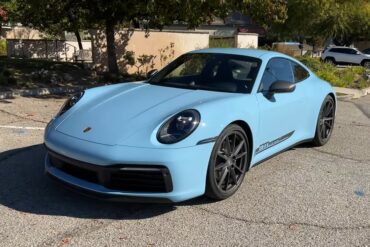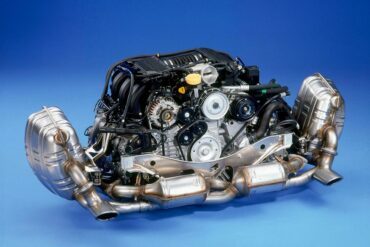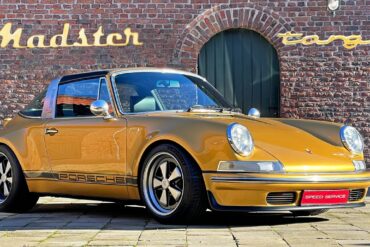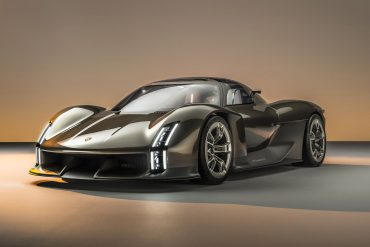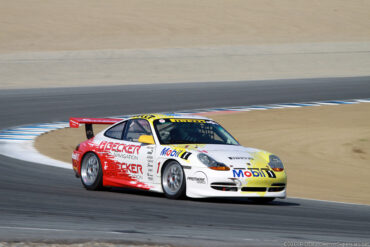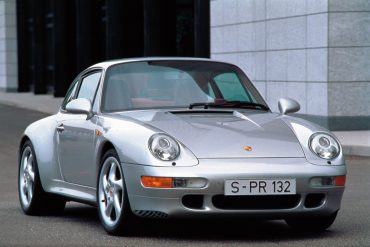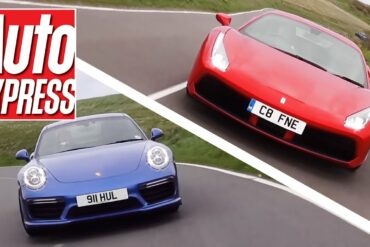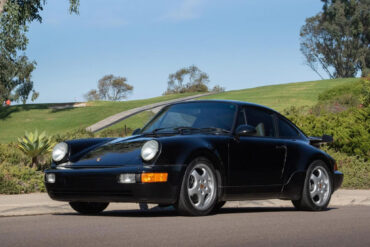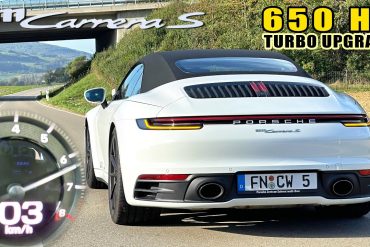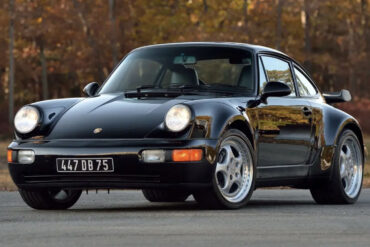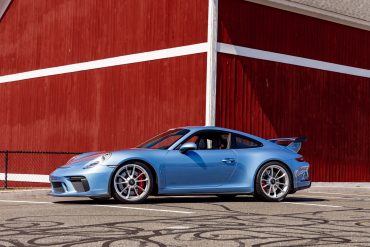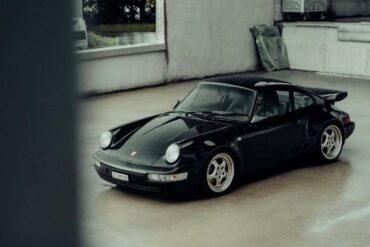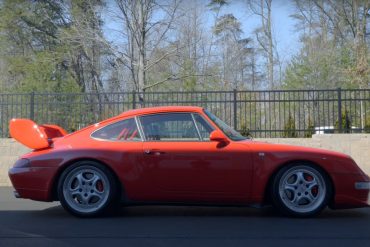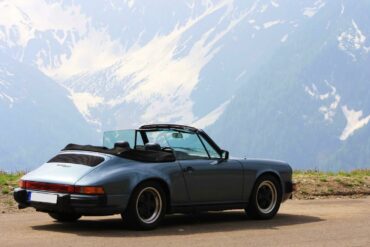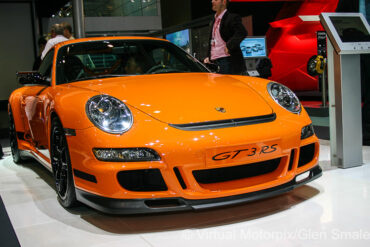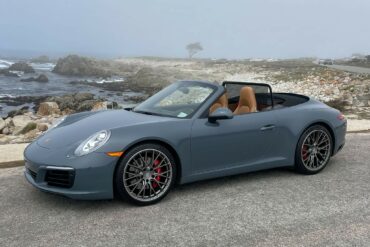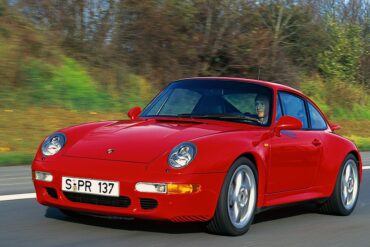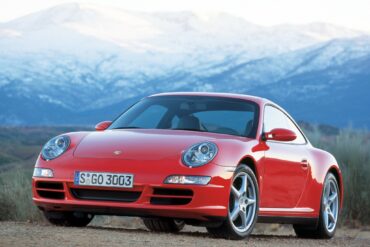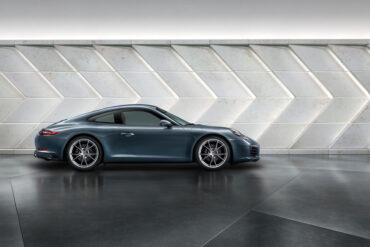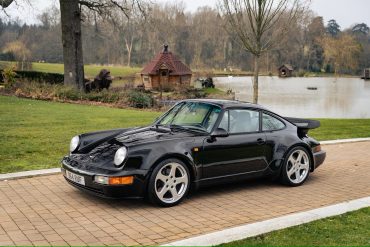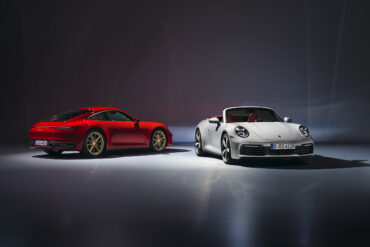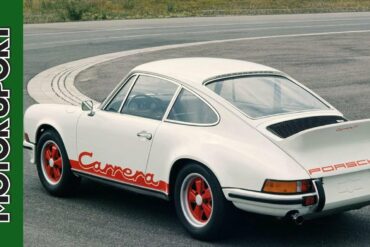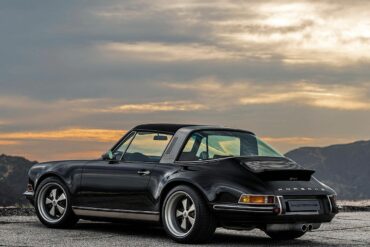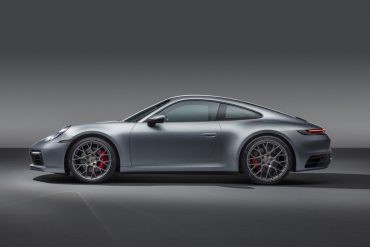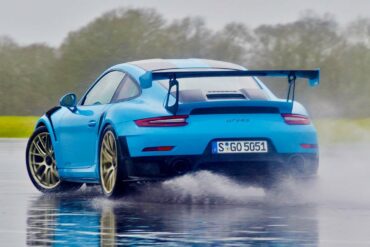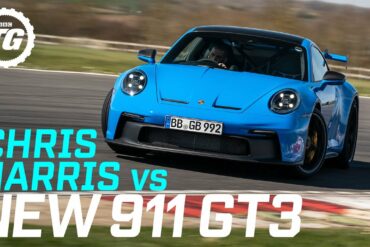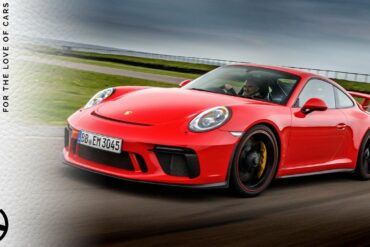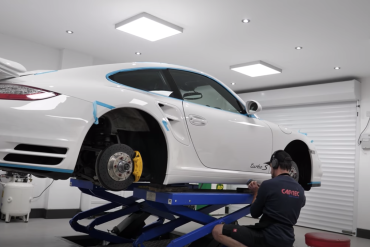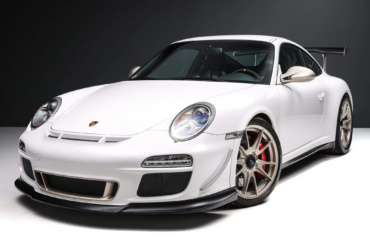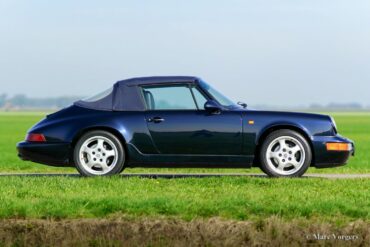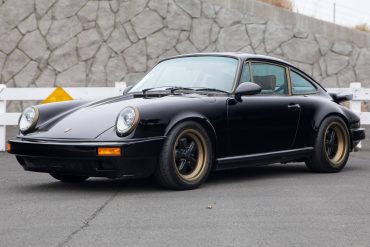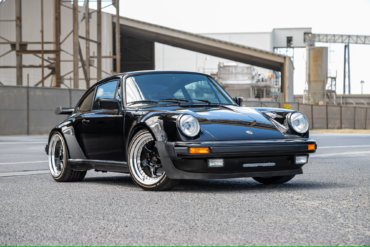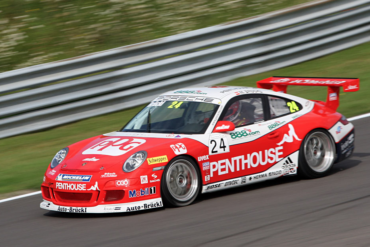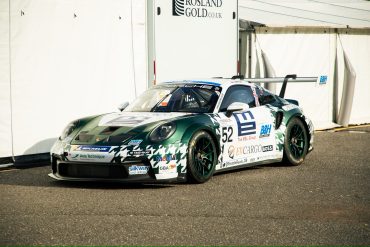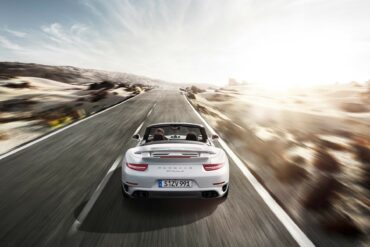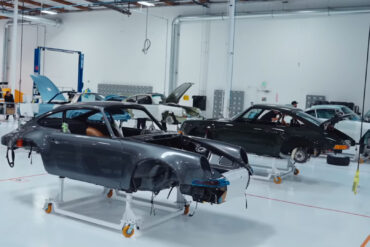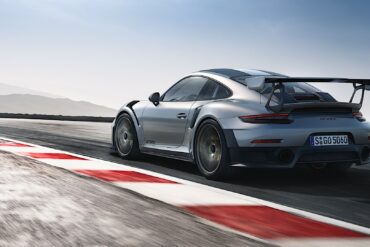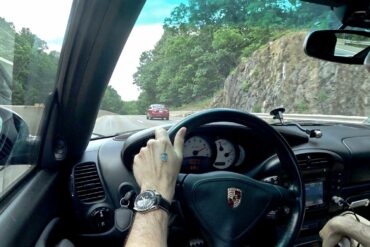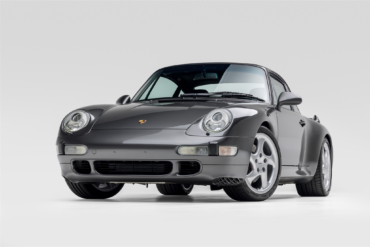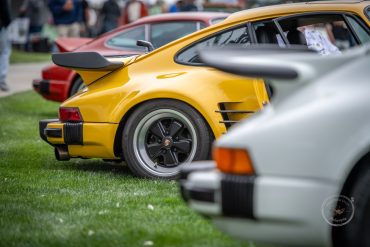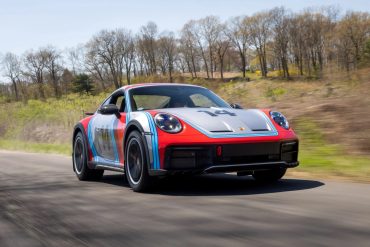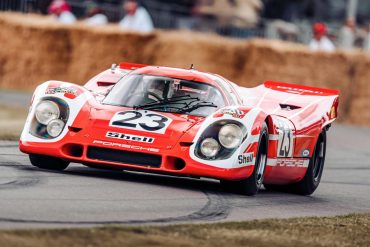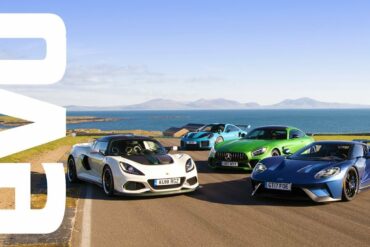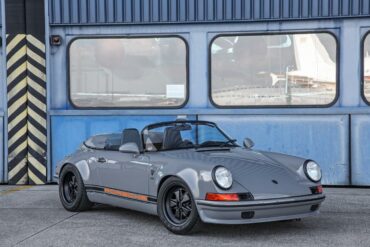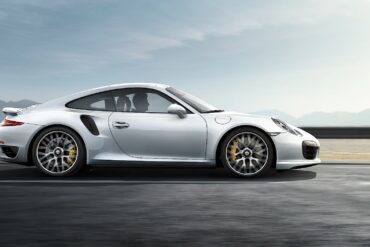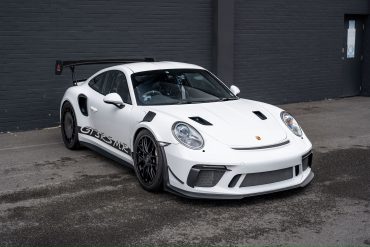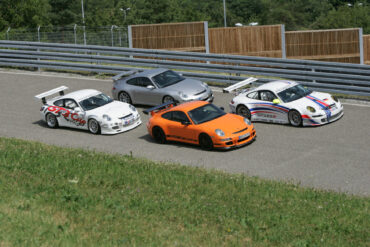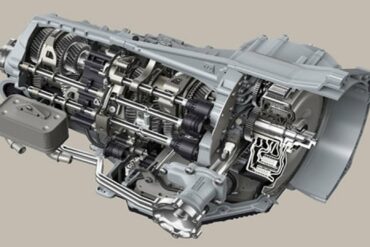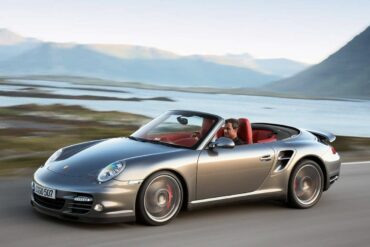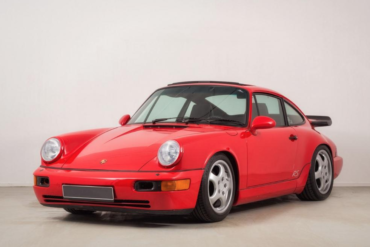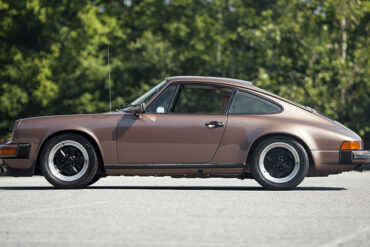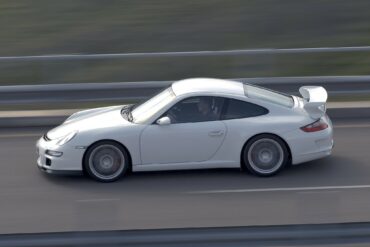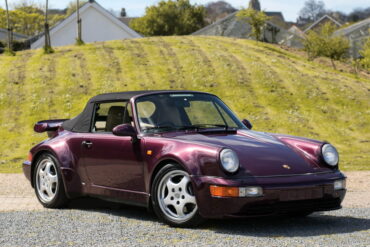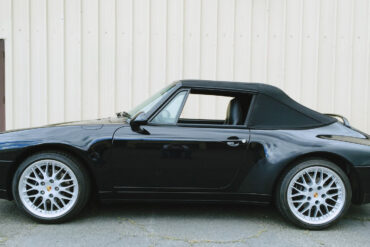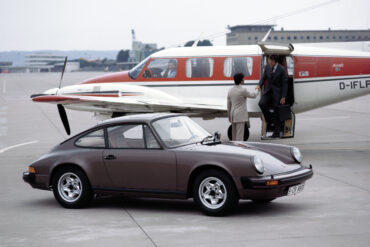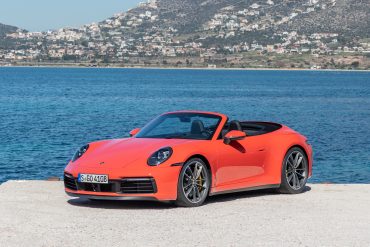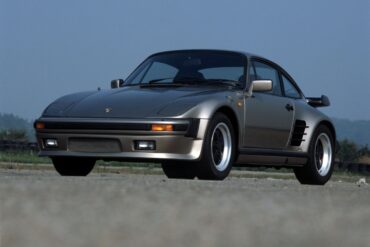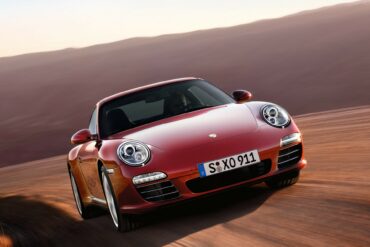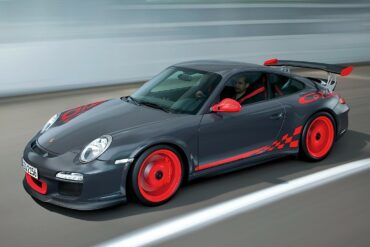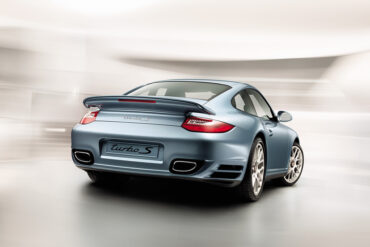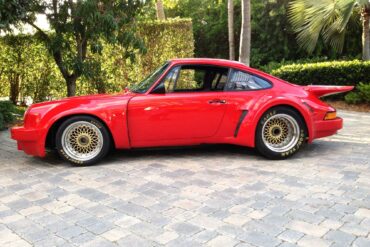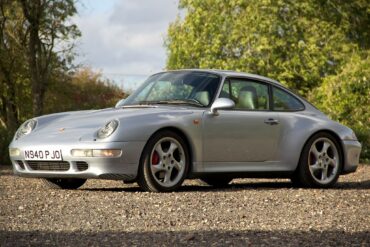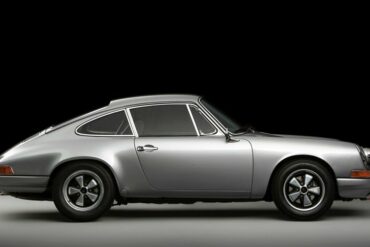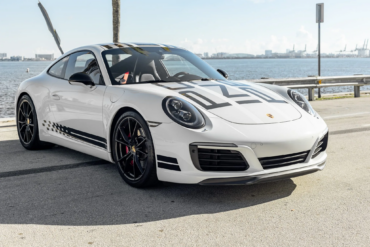2016 Porsche 911 Carrera 4 Cabriolet (991.2) Technical Specifications Engine layout Rear Engine Engine type Boxer, twin-turbo Cylinders 6 Valves per...
Porsche 911
All
- Porsche 912
- 911 Carrera RS 2.7
- Porsche 901 (911)
- Porsche 911 (F-Series)
- Porsche 911 (991)
- Porsche 911 (G-Series)
- Porsche 911 (964)
- Porsche 911 (993)
- Porsche 911 (996)
- Porsche 911 (997)
- 911 Speedster Concept
- Porsche 911 (992)
- 964 Carrera 2
- 964 Carrera 4
- ’30 Jahre’ Anniversary
- 964 Speedster
- 964 Turbo
- 964 Carrera RS
- 964 Carrera Cup
- 964 RSR
- 993 Carrera
- 993 Carrera 4
- 911 Edition 50
- 993 Carrera 4S
- 911 2.0 Bertone Roadster
- 993 Carrera S
- 993 Targa
- 992 Sport Classic
- 993 Turbo
- 996 Carrera
- 993 Carrera RS
- 992 America Edition 911
- 996 Carrera 4
- 993 GT2
- 996 Targa
- 993 Carrera Cup
- 996 Carrera 4S
- 996 Turbo
- 996 Turbo S
- 996 GT3
- 996 GT3 RS
- 996 GT2
- 996 GT3 Cup
- 996 GT3 R
- 996 GT3 RSR
- 997 Carrera
- 996 GT3 RS Race
- 997 Carrera S
- 997 Carrera 4
- 997 Carrera 4S
- 997 Targa
- 911 Carrera 3.0 Coupe (G-Series)
- 997 Targa 4S
- 997 Turbo
- 997 Turbo S
- 997 GT2
- 992 Carrera T
- 997 GT2 RS
- 997 Speedster
- 997 Carrera GTS
- 992 Dakar
- 997 Carrera 4 GTS
- 997 GT3 Cup
- 997 GT3 R
- 997 GT3 RSR
- 997 GT3
- 997 GT3 RS
- 997 GT3 R Hybrid
- 991 Carrera
- 991 Carrera 4
- 991 Carrera S
- 991 Carrera 4S
- 991 Targa 4
- 991 Targa 4S
- 991 Turbo
- 991 Turbo S
- 991 Carrera GTS
- 991 Carrera 4 GTS
- 991 Targa 4 GTS
- 991 911 R
- Porsche 992 GT2 RS
- 991 GT3
- 991 GT3 RS
- 991 GT2 RS
- 991 Speedster
- 991 GT3 R
- 991 GT3 Cup
- 991 RSR
- 991 Carrera T
- 992 Carrera 2
- 992 Carrera 4
- 992 Carrera S
- 992 Carrera 4S
- 992 Targa 4
- 992 RSR
- 992 Targa 4S
- 992 Carrera GTS
- 992 Carrera 4 GTS
- 992 Targa 4 GTS
- 992 Turbo
- 992 GT3 R
- 992 Turbo S
- 992 GT3
- 992 GT3 Touring
- 992 911 S/T
- 911 (G-Series)
- 992 GT3 RS
- 992 GT2 RS
- 992 GT3 Cup
- 911 Carrera 3.0 (G-Series)
- 911 S (G-Series)
- 911 Carrera RSR 2.8
- 911 SC (G-Series)
- Porsche 992 GT3 R Rennsport
- 911 S/T
- 911 Carrera 3.2 (G-Series)
- 911 (Base Model)
- 911 Turbo (930)
- 911 SC Safari
- 911 L
- 911 Carrera RSR Turbo 2.1
- 911 T
- 911 Carrera RSR 3.0
- 911 E
- 911 S
- 911 SC San Remo
- 911 Carrera 3.2 Clubsport
- 911 R
- Porsche 953
- 911 Carrera RS 3.0
- 911 T/R
- 911 Carrera 25th Anniversary
- 911 SC RS
- 911 Turbo LE
- 911 Carrera Commemorative
- 911 Carrera 2.7 (G-Series)
- 911 3.2 Speedster
- 911 Turbo 2.7
- 964 Turbo S
Unveiled at the 2022 Los Angeles Auto Show, the 911 Dakar pays tribute to the Porsche 953’s triumphant victory in...
1972 – 1973 Porsche 911 E 2.4 Targa (LWB) Pictures & Gallery...
Introduced in 1966 to enhance the performance capabilities of the already successful 911, the 911 S boasted a more powerful...
Known world-wide for their excellence in engineering, some question the need to modify contemporary Porsches for increased power. That “some”...
1974 – 1975 Porsche 911 Carrera RSR 3.0 Pictures & Gallery ...
The Porsche 991.2 Turbo S Cabriolet is a top-of-the-line convertible with a hefty price tag of $200,400. This powerhouse offered...
It took Porsche twenty years before deciding to modernise its 911, yet outwardly, apart from its bumpers, the new 964...
Porsche 911 Spare Parts Catalogs (G-Series, 1974 – 1989 Model Year) These official Porsche PET Diagrams and codes for the G...
History Long regarded as the best entry-level air-cooled 911, the Carrera 3.2 remains highly desirable. It was the final evolution...
991.1 Porsche 911 Turbo S Carfection Review We take a look at the all-new 2015 Porsche 911 Turbo S and...
1972 – 1973 Porsche 911 E 2.4 Coupe (LWB) Pictures & Gallery ...
2009 Porsche 911 Carrera 4 Cabriolet (997.2) Technical Specifications Engine Type Flat 6 Induction Normally-aspirated Cooling Water-cooled Valvetrain Double overhead camshafts Injection...
There is nothing better Porsche 911 992 GT3 Touring being wrung out on the Autobahn. Lots of hard acceleration runs...
2005 Porsche 911 Carrera 4S Coupe (996) Technical Specifications Engine Type Flat 6 Induction Normally-aspirated Cooling Water-cooled Valvetrain Double overhead...
2016 Porsche 911 GT3 RS (991) Technical Specifications Engine Engine layout Rear Engine Engine type Boxer-6 Cylinders 6 Valves per cylinder...
Manthey PureRxcing has won the six-hour race at the Autodromo José Carlos Pace in São Paulo, clinching its second and...
In 1993, Porsche introduced the Type 993, widely regarded as the most user-friendly and elegantly designed 911. Over the years,...
The 993 Turbo S, available between 1997 and 1998, bumped the power from the standard 993 Turbo up to 450hp (430 for the United States market) with larger turbochargers and a modified engine management system. The Turbo S was fitted with more luxury trim bits on the interior – with more leather and carbon fiber than on the standard Turbo. A larger rear wing was installed as well. Only 345 were built. Its direct successor was the 996 Turbo S for model year 2005.
2016 Porsche 911 Carrera S Coupe (991.2) Technical Specifications Engine Engine layout Rear Engine Engine type Boxer, twin-turbo Cylinders 6 Valves...
The 997 Sport Classic is a limited edition version of the 997.2 Carrera S coupé inspired by the 1973 Carrera...
Porsche Motorsport celebrated the 25th anniversary of Manthey-Racing GmbH with a remarkable special edition model known as the 911 GT2...
August 18, 2023: Referring to The Quail, A Motorsports Gathering as a car show would be incorrect. Call it a...
Test Driving a 1989 Porsche 964 Carrera 4 ...
Guntherwerks 993 Review We know that restomod 911s are a divisive topic amongst Porsche enthusiasts, but when I watch reviews...
Porsche 911 Targa 4S review Created in the 1960s to compete in the famous Sicilian road race, known as the...
Singer Vehicle Design – Fredericksburg Commission Today, we take a closer look at the Singer Vehicle Designs Fredericksburg Commission. The...
Background Perhaps no company has celebrated the heritage of the air-cooled 911 with such obsessive attention to detail as California-based...
We present our Full HD wallpaper for desktop of Ferrari 812 Superfast in high resolution and quality, as well as an...
2013 Porsche 911 Carrera 4S Cabriolet (991) Technical Specifications Engine Type Flat 6 Induction Normally-aspirated Cooling Water-cooled Valvetrain Four overhead camshafts,...
Miles takes the 2023 Porsche 911 Carrera T Manual for a test drive and gives his expert review about this...
Porsche 911 (996) Engine Codes At its debut, the 996 featured the most significant change from the classic 911 series:...
The folks at AutoTopNL managed to get their hands on a beautiful Porsche 964 Targa restomod built by Speed Service,...
Whether in Portugal, Brazil, China or Switzerland: the world of Porsche has been celebrating 75 Years of Porsche Sports Cars...
The 996 GT3 Cup served as the basis for the 996 GT3 road car, featuring a 3.6 litre engine with 355 hp. For the 1999 season the engine output was increased to 365 hp. For the 2001 season the GT3 Cup received modified aerodynamics including an enlarged rear wing and improved cooling. For 2002, the GT3 Cup received several changes, adopting facelift 996.2 features such as Turbo-style headlights. The new body significantly improves aerodynamics and cooling. Engine output was increased to 380 hp. For 20003 onward, the power was hiked once again, with the engine now pumping out 385 bhp @ 7250 rpm and of torque 288 ft lbs @ 6500 rpm.
The Carrera S was the ultimate, naturally aspirated version of the Carrera 2. Porsche decided to offer something more to its customers when it launched the Carrera S version. It featured a stiffer and lowered suspension. Its wider tires made it better in the corners and faster around a race-track than its Carrera 2 sibling. The Carrera S took its bodywork from the Porsche Turbo. But it didn't get the turbocharger or the all-wheel-drive system. Its wider rear fenders and lowered stance than the Carrera lineup made it a desirable car for the Porsche fans. The engine was the same 3.6-liter naturally aspirated, but it was offered in the higher power output of 285 hp. The only transmission available was a 6-speed manual.
Turbo supercars fight it out The Ferrari 488 GTB is the first turbocharged, mid-engine Ferrari since the legendary F40 in...
Bring a Trailer is currently offering two very interesting Porsche 911s, a 1991 Porsche 911 Turbo and a low-mileage 1994...
AutoTopNL, despite being based in the Netherlands (hence the NL), likes to take cars to the German autobahn a lot....
Director sells Turbo for $60K, later auctioned for $1.3M Amazingly, Bad Boys director Michael Bay was involved in a bombshell...
This 2018 Porsche 911 GT3 has a 4.0-liter flat-six engine coupled with a seven-speed PDK dual-clutch transaxle, and features a...
The 1989/90 change of model year saw the launch of the Porsche 911, 964 series onto the market. This 911...
The Porsche 993 is often hailed as the pinnacle of the air-cooled 911 era. But even within this iconic model,...
1983 Porsche 911 SC Cabriolet Pictures & Gallery ...
Finished in graphite blue metallic over a two-tone espresso/cognac natural leather interior, this 2017 Porsche 991.2 Carrera S Cabriolet features...
Porsche Option Codes – Porsche 911 (1998 Model Year) Looking to decode your 1998 Porsche 911 option codes? Want to...
The 997 Carrera 4 was the all-wheel-drive version of the standard 997 Carrera and it arrived as a 2006 model year car (along with the 4S models). The 997.1 Carrera 4 had a3.6 L Watercooled Flat 6 (M96/05) engine that was good for 321 bhp @ 6800 rpm and 273 ft lbs @ 4250 rpm. It had a sub 5 second 0 - 60 mph hour time and a top speed of 174 mph. The transmission (six-speed manual or five-speed Tiptronic) feeds a forward propshaft that mates to a viscous coupling unit with a front differential.
The 991.2 generation Carrera range update was a big one. The base coupe looks about the same, but under the hood Porsche did something crazy. Gone is the 3.4 liter naturally aspirated flat 6, replaced by a 3.0 turbocharged flat six. The good news is that the new engine is pumps out 370 hp and 331 ft lbs of torque, a big leap over the previous generation (output is up over the previous car by 20 horsepower and 44 lb-ft of torque). Inside, the updated 911 hasn’t changed dramatically, and although Porsche’s new PCM infotainment system is faster and more intuitive to use.
This Porsche RUF 911 RCT, from the 964 era, serves as the origin of the RUF RCT model and was...
The most basic version of the Porsche 911 Carrera has now been unveiled. Porsche chose to detune the twin-turbocharged flat-six engine and downgrade some of the chassis components. These cars offer very good performance and driving dynamics for a slightly lower price. While marginally larger and heavier than the 991-generation model it replaced, the 992 is also more advanced. Power climbs by 15 bhp from the 991 Carrera, to 379 bhp @ 6500 rpm, which is more than enough horsepower for the street.
The Story Behind the 2.7 RS The 2.7 RS was the first 911 to carry the Carrera badge, this is...
Singer Vehicle Design – Easthampton Commission Today, we take a closer look at the Singer Vehicle Designs Easthampton Commission. At the...
What an incredible combination! Porsche 992 Turbo Techart with HRE Classic 309M in Gloss White from HRE Performance Wheels. Photo...
Porsche Option Codes – Porsche 911 (2020 Model Year) Looking to decode your 2020 Porsche 911 option codes? Want to...
Porsche 991 GT3 RS on road and track Looks like a 911, drives like a hypercar? The Porsche 911 GT2...
The Porsche 911 GT3 | Chris Harris Drives | Top Gear In this week’s instalment, Chris Harris tackles the mighty...
911 Owner Stories: Dan and his 993 Carrera 4S At a young age, Dan Brunn moved from Tel Aviv to...
Top Gear 992 GT3 Review Petrolheads, assemble: it’s a new 992 Porsche 911 GT3. Which is basically like saying ‘it’s...
2018 Porsche 911 GT3 Track Review Porsche have listened to their customers and added all the lessons they’ve learned recently...
Detailing a 997.2 Turbo S – Paint Correction, Wheels Off + Modesta Coatings We all know how obsessed we are...
This particular 2011 Porsche 911 GT3 RS is one of only 541 built for the US market during a two-year...
1992 Porsche 911 Carrera 4 Cabriolet (964) Technical Specifications Engine Type Flat 6 Induction Normally-aspirated Cooling Air/oil-cooled Valvetrain Single overhead...
Head to Head Mercedes-AMG GT C vs Porsche 911 Carrera T For the road, the GT C is the best...
This 1978 Porsche 911 Outlaw showcases a high-quality custom finish and a powerful 993 3.6L engine, delivering both visual excitement...
Collecting Cars is proud to offer a striking example of a 1978 Porsche 911 3.0 SC featuring an all-black colour...
2005 Porsche 911 GT3 Cup (997) Technical Specifications Engine 3.6 L Boxer-6 w/Dry Sump Lubrication Fuel Feed Multi-point, Sequential Injection Bore 76.4...
The Cup car, styled in a spectacular manner, stands as the first racing car based on the current 992 generation...
2016 Porsche 911 Turbo S Cabriolet (991) Technical Specifications Engine layout Rear Engine Engine type Twin Turbo Boxer w/ VTG Cylinders...
Singer has come a long way since its founder Rob Dickinson started turning Porsche 964s into four-wheeled jewelry 12 years...
2018 Porsche 911 GT2 RS (991.2) Technical Specifications Body type Coupe Seats 2 Doors 2 Powertrain Architecture Internal Combustion engine...
Porsche 996 Turbo X50 Review 2004 Porsche 911 996 Turbo X50. The X50 package was later replaced by the Turbo...
Bring A Trailer is currently offering a gorgeous example of a 1997 Porsche 911 Turbo, one of the marque’s final...
The 9th annual Werks Reunion Monterey, held by the Porsche Club of America, took place for the second year in...
Unveiled at the 2022 Los Angeles Auto Show, the 992 Dakar pays tribute to the Porsche 953’s victory in the...
Porsche honored As the honored marque of this year’s Festival of Speed the sportscar manufacturer showed off with different actions....
Ultimate Track Test Road Racers. Ford GT, Porsche 911 GT2 RS, AMG GT R and Lotus Exige Cup 430 –...
A Stunning Speedster Restomod You guys already know we’re huge fans of DP Motorsport thanks to a steady flow of...
2014 – 2016 Porsche 911 Turbo S (991) Pictures & Gallery ...
Offered for sale via auction on Collecting Cars a sensational track-focused performance car, upgraded by legendary Porsche specialist Manthey Racing...
Overview The GT3s are the low volume 911s, road-going production cars homologated for what was Group 3 competition. The original...
Porsche 911 (997) Transmission Codes The transmission number code is found on the transmission data plate. Code Transmission Model years...
Porsche Option Codes – Porsche 911 (2010 Model Year) Looking to decode your 2010 Porsche 911 option codes? Want to...
Porsche 911 Spare Parts Catalogs (964, 1989 – 1994 Model Year) These official Porsche PET Diagrams and codes for the...
1978-1983 Porsche 911 SC Coupe Pictures & Gallery...
2008 Porsche 911 GT3 (997) Technical Specifications Engine Type Flat 6 Induction Normally-aspirated Cooling Water-cooled Valvetrain Double overhead camshafts Injection Port...
The Turbo-look Porsche 964 has always been a very desirable automobile, among them 1,532 Carrera 2 Cabriolets constructed worldwide. Within that group, there were some cars that were even more specialized. The Register says six Turbo-look cabriolets were pulled off the production line in Zuffenhausen and transported to the Porsche Exclusive shop in Weissach. Three of these six powerful and luxuriously equipped drop-tops were equipped with left-hand drive for buyers in Germany (Code C00), and the other three were fitted with right-hand drive
1998 Porsche 911 Carrera Cabriolet (993) Technical Specifications Engine Type Flat 6 Induction Naturally Aspirated Cooling Air/oil-cooled Valvetrain Single overhead...
Turn Left or go home At 15:00, on a bitterly cold afternoon in December 2023, Porsche werks driver Romain Dumas...
As a successor to the Carrera 2.7 MFI, the Carrera 3.0 was fitted with a variation of the 930's engine without a Turbo. During its production period only 3,687 cars were made. The Carrera 3.0 was replaced by the Porsche 911 SC for model year 1978. Between 1976 and 1977, Porsche introduced the Carrera 3.0 with wide rear flares, optional whale-tail, and other luxury options. Built before the ‘911 SC’ it has everything the SC has, and more. It’s a different drive with more power @200bhp; more torque @188 ft/lb @4200rpm and it was 10% lighter too.
2022 Porsche 911 Carrera S Cabriolet (992) Technical Specifications PDK 992 Carrera S Cabriolet Specs Model 992 911 Carrera S Cabriolet...
1981-1989 Porsche 911 Turbo 3.3 SE ‘Flachbau’ Pictures & Gallery ...
For 2009, engine power is distributed to all four wheels via the same electronically controlled Porsche Traction Management system found previously only on the Porsche Turbo. The electronic controls respond to driving conditions even more instantaneously than the previously used hydraulically activated all-wheel drive system. The Carrera 4S model, with a 3.8-litre engine developing 355 bhp, can go from 0 to 60 mph in 4.5 seconds and has a top speed of 185 mph.
Based on the already primal 997.2 GT3, the RS gets another 15 hp from the 3.8-liter flat-six for a total of 450, or more than 118 hp per liter. A racing machine tamed for street use, the GT3 RS is hardly just about horsepower. It gets a wider track, it weighs less, and it produces more downforce than the GT3. The only available transmission is a six-speed manual gearbox (with the ratios even shorter than the GT3). A racing machine tamed for street use, the GT3 RS also gets a wider track, it weighs less, and it produces more downforce than the GT3.
2013 Porsche 911 Turbo S (997) Technical Specifications Engine Type Flat 6 Induction Twin-turbocharged Cooling Water-cooled Valvetrain Double overhead camshafts Injection...
When I’m not helping to sell the occasional old race car, or visiting old race car meetings, I’ve usually got...
1997 Porsche 911 Carrera 4S (993) Technical Specifications Engine Type Flat 6 Induction Naturally Aspirated Cooling Air/oil-cooled Valvetrain Single overhead...
Porsche 911 (F-Body) Paint Color Options This post outlines all the color options for the original F-Body (Classic) generation Porsche...
Designed and manufactured by Porsche Exclusive, also known as the ‘Special Wishes Department’, this department of the factory is dedicated...
Background Since the 1960s, Porsche has been optimizing the aerodynamics of future racing and production vehicles in the wind tunnel...


